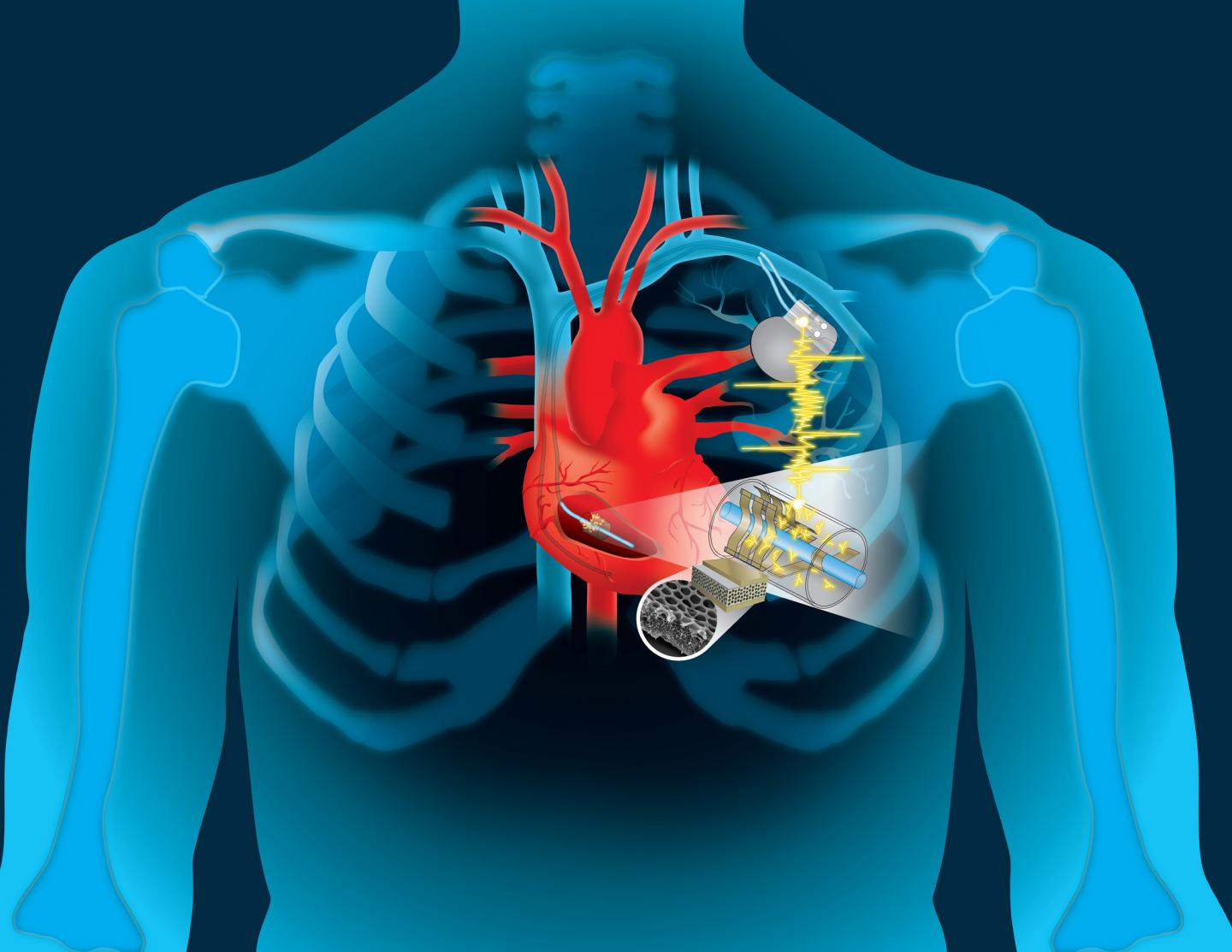
According to a recent study, a team of engineers created an invention that can capture and convert the kinetic energy of the heart into electricity to recharge life-saving implantable devices.
The results of the study, titled “Flexible Porous Piezoelectric Cantilever on a Pacemaker Lead for Compact Energy Harvesting”, were recently published in the cover story for Advanced Materials Technologies.
In their work the researchers presented a design on existing pacemaker leads tailored for compact energy harvesting.
The design they presented “incorporates flexible porous polyvinylidene fluoride‐trifluoroethylene thin film within a dual‐cantilever structure, which wraps around the pacemaker lead with two free ends sticking out for harvesting energy from the heart’s motion.”
The team found that sufficient electrical energy can be converted from the kinetic energy of a pacemaker lead to sustain operations.
An effective energy source for implantable biomedical devices
Live-saving implantable devices, such as pacemakers and defibrillators, need to replaced every five to ten years. Replacing these devices requires surgery. This can not only be costly, but also creates the possibility of complications.
“We’re trying to solve the ultimate problem for any implantable biomedical device,” said Dartmouth engineering professor John X.J. Zhang, a lead researcher on the study. ”How do you create an effective energy source so the device will do its job during the entire life span of the patient, without the need for surgery to replace the battery?”
“Of equal importance is that the device not interfere with the body’s function,” added Dartmouth research associate Lin Dong, first author on the paper. “We knew it had to be biocompatible, lightweight, flexible, and low profile, so it not only fits into the current pacemaker structure but is also scalable for future multi-functionality.”
According to Zhang, a self-charging pacemaker is about five years away from commercialization.
“We’ve completed the first round of animal studies with great results which will be published soon,” said Zhang. “There is already a lot of expressed interest from the major medical technology companies, and Andrew Closson, one of the study’s authors working with Lin Dong and an engineering PhD Innovation Program student at Dartmouth, is learning the business and technology transfer skills to be a cohort in moving forward with the entrepreneurial phase of this effort.”
Citation:
L. Dong, X. Han, Z. Xu, A. B. Closson, Y. Liu, C. Wen, X. Liu, G. P. Escobar, M. Oglesby, M. Feldman, Z. Chen, J. X. J. Zhang, Adv. Mater. Technol. 2019, 4, 1800148. https://doi.org/10.1002/admt.201800148

